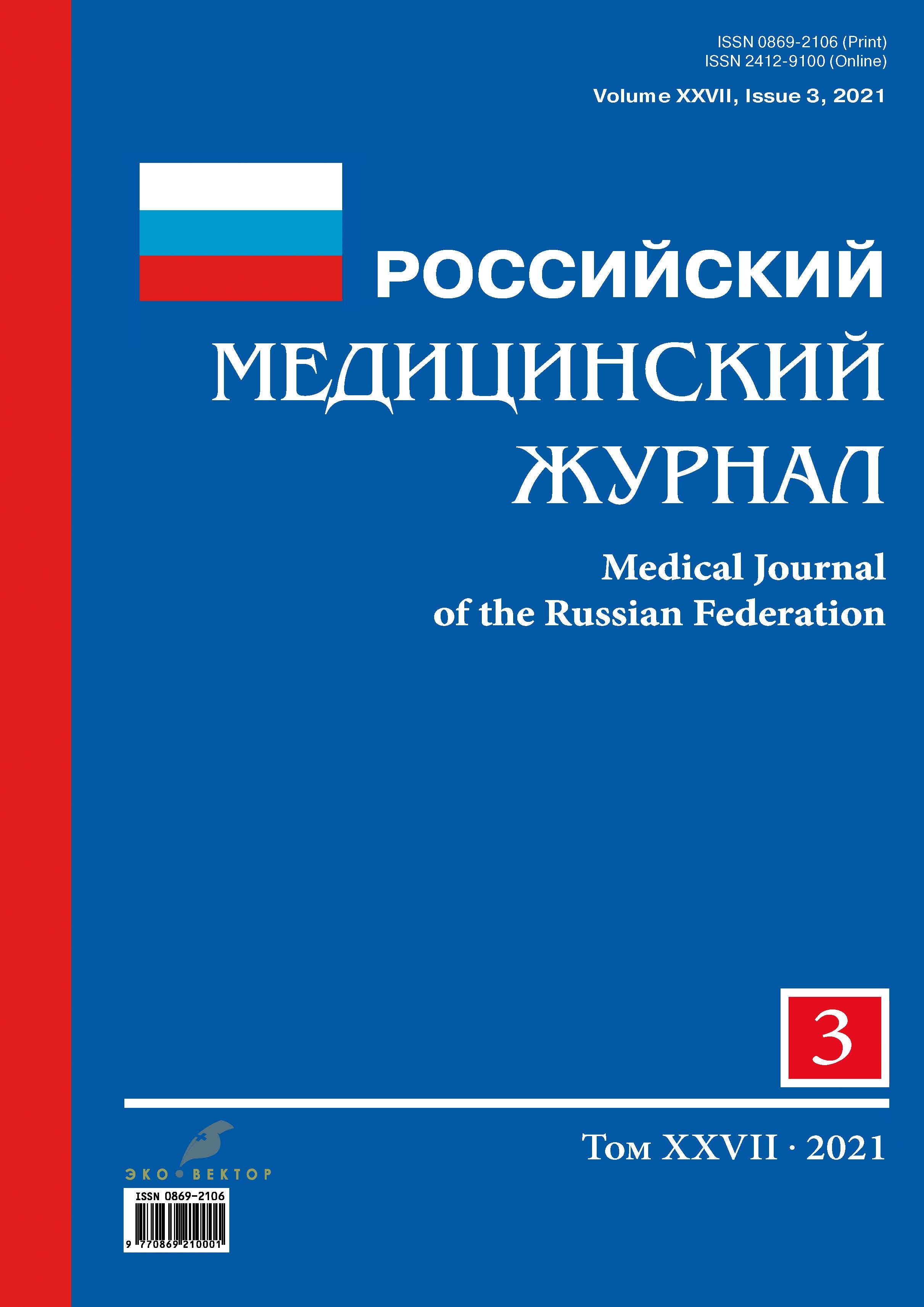Осложнение COVID-19 в челюстно-лицевой области. Клинические наблюдения
- Авторы: Хелминская Н.М.1, Посадская А.В.1, Кравец В.И.1, Павлова И.А.2
-
Учреждения:
- Российский национальный исследовательский медицинский университет имени Н.И. Пирогова
- Городская клиническая больница № 1
- Выпуск: Том 27, № 3 (2021)
- Страницы: 313-320
- Раздел: Клинический случай
- Статья получена: 21.02.2022
- Статья одобрена: 21.02.2022
- Статья опубликована: 15.05.2021
- URL: https://medjrf.com/0869-2106/article/view/101317
- DOI: https://doi.org/10.17816/0869-2106-2021-27-3-313-320
- ID: 101317
Цитировать
Полный текст
Аннотация
Статья посвящена клинической симптоматике воспалительно-деструктивного поражения костей лицевого скелета как отдаленному осложнению перенесенного COVID-19. Самым распространенным симптомом коронавирусной инфекции является тромбоз. Многие ученые отмечали, что основной мишенью для COVID-19 считаются легкие с пневмонией разной степени тяжести. Среди причин летальных исходов у молодых людей стали доминировать острые нарушения мозгового кровообращения и коронарная патология. Клинически у пациентов с COVID-19 регистрировались как очевидные тромботические осложнения с выявлением крупных тромбов (причем не только в венах и легочных артериях, но и в сердце, сосудах головного мозга, почек, печени), так и признаки тромбоза на микроциркуляторном уровне, который прижизненно доказать довольно сложно. В отделении челюстно-лицевой хирургии клинической больницы проведена диагностика, лечение и катамнестическое наблюдение пациента с перенесенным COVID-19 и осложнениями, возникшими в челюстно-лицевой области. Пациентке при поступлении поставлен диагноз: хронический остеомиелит верхней челюсти справа, хронический правосторонний гаймороэтмоидит, дефект слизистой оболочки твердого нёба справа, ороантральное соустье справа, кератит правого глаза. В период стационарного лечения проводилась многокомпонентная терапия. На фоне проводимой терапии отмечено улучшение общего состояния пациентки и местного статуса.
Заключение. Проведенные клинические наблюдения свидетельствуют, что течение COVID-19 характеризуется поздними осложнениями в челюстно-лицевой области в виде поражения сосудов, отходящих от ствола а. maxillaris в области крыло-нёбной ямки.
Нарушение трофики носило медленно прогрессирующий и необратимый характер. Клинико-рентгенологическая картина без четко выраженных границ костного некроза средней зоны лица. Необходимо отметить низкую регенерацию тканей.
Ключевые слова
Полный текст
Об авторах
Наталья Михайловна Хелминская
Российский национальный исследовательский медицинский университет имени Н.И. Пирогова
Автор, ответственный за переписку.
Email: khelminskaya@mail.ru
ORCID iD: 0000-0002-3627-9109
д.м.н., профессор
Россия, МоскваАлександра Владимировна Посадская
Российский национальный исследовательский медицинский университет имени Н.И. Пирогова
Email: shush79@mail.ru
ORCID iD: 0000-0002-5926-8541
к.м.н., доцент
Россия, МоскваВиктор Иванович Кравец
Российский национальный исследовательский медицинский университет имени Н.И. Пирогова
Email: vi_kravets@mail.ru
ORCID iD: 0000-0002-6345-3993
к.м.н., доцент
Россия, МоскваИрина Александровна Павлова
Городская клиническая больница № 1
Email: personal2032@mail.ru
ORCID iD: 0000-0002-6564-2595
Россия, Москва
Список литературы
- covid19.who.int [интернет]. [дата обращения: 18.08.2021]. Доступ по ссылке: https://covid19.who.int/cardioweb.ru [интернет]. Нарушения свертывания крови у пациентов с COVID-19: рекомендации экспертов [дата обращения: 18.08.2021]. Доступ по ссылке: https://cardioweb.ru/news/item/2129-narusheniya-svertyvaniya-krovi-u-patsientov-s-covid-19-rekomendatsii-ekspertov
- Blanco-Melo D., Nilsson-Payant B.E., Liu W.C., et al. Imbalanced Host Response to SARS-CoV-2 Drives Development of COVID-19 // Cell. 2020. Vol. 181, N 5. P. 1036–1045 e1039. doi: 10.1016/j.cell.2020.04.026
- Catanzaro M., Fagiani F., Racchi M., et al. Immune response in COVID-19: addressing a pharmacological challenge by targeting pathways triggered by SARS-CoV-2 // Signal Transduct Target Ther. 2020. Vol. 5, N 1. P. 84. doi: 10.1038/s41392-020-0191-1
- Group R.C., Horby P., Lim W.S., et al. Dexamethasone in Hospitalized patients with COVID-19 // N Engl J Med. 2021. Vol. 384, N 8. P. 693–704. doi: 10.1056/NEJMoa2021436
- Cowan L.T., Lutsey P.L., Pankow J.S., et al. Inpatient and Outpatient Infection as a Trigger of Cardiovascular Disease: The ARIC Study // J Am Heart Assoc. 2018. Vol. 7, N 22. P. e009683. doi: 10.1161/JAHA.118.009683
- Nagai T., Nitta K., Kanasaki M., et al. The biological significance of angiotensin-converting enzyme inhibition to combat kidney fibrosis // Clin Exp Nephrol. 2015. Vol. 19, N 1. P. 65–74. doi: 10.1007/s10157-014-1000-3
- youtube.com [интернет]. ACC/Chinese Cardiovascular Association COVID-19 Webinar 1 [дата обращения: 18.08.2021]. Доступ по ссылке: https://www.youtube.com/watch?v=CjEhV68GcD8
- Thachil J., Tang N., Gando S., et al. ISTH interim guidance on recognition and management of coagulopathy in COVID-19 // J Thromb Haemost. 2020. Vol. 18, N 5. P. 1023–1026. doi: 10.1111/jth.14810
- academy.isth.org [интернет]. OBE B.H., Retter A., McClintock C. Practical guidance for the prevention of thrombosis and management of coagulopathy and disseminated intravascular coagulation of patients infected with COVID-19 [дата обращения: 18.08.2021]. Доступ по ссылке: https://academy.isth.org/isth/document_library?dc_id=9449&f=menu%3D8%2Abrowseby%3D8%2Asortby%3D2%2Alabel%3D19794
- Козлов И.А., Тюрин И.Н. Сердечно-сосудистые осложнения COVID-19 // Вестник анестезиологии и реаниматологии. 2020. Т. 17, № 4. С. 14–22. doi: 10.21292/2078-5658-2020-17-4-14-22
- Иванов М.Б., Шустов Е.Б., Литвинцев Б.С., и др. Эндотелиальная дисфункция как звено патогенеза COVID-19 // Биомедицинский журнал Медлайн.ру. 2020. Т. 21, № 71. С. 884–903.
- Ларина В.Н., Головко М.Г., Ларин В.Г. Влияние коронавирусной инфекции (COVID-19) на сердечно-сосудистую систему // Вестник Российского государственного медицинского университета. 2020. № 2-2020. doi: 10.24075/vrgmu.2020.020
- Zhang Y., Xiao M., Zhang S., et al. Coagulopathy and Antiphospholipid Antibodies in Patients with COVID-19 // N Engl J Med. 2020. Vol. 382, N 17. P. e38. doi: 10.1056/NEJMc2007575
Дополнительные файлы














